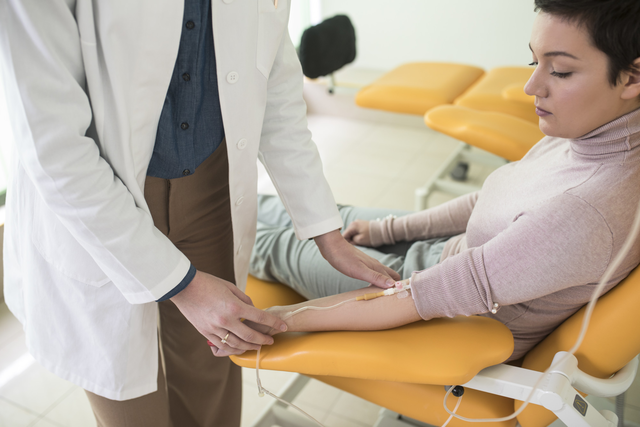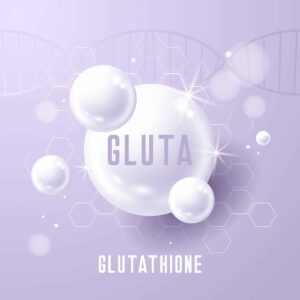You probably had firm and elastic skin in your pre-20 years. However, your skin may begin showing signs of aging as you approach your mid-ages. That’s because after age 20, your body produces approximately 1 percent less collagen yearly, translating to more fragile and less firm skin.
Also, elastin production diminishes. Therefore, the skin becomes less elastic and can’t bounce back to shape after stretching. Therefore, it can end up too thin or thick, forming slight wrinkles that may progress with age.
The above constitutes the natural aging process, also known as intrinsic aging. However, extrinsic aging can occur due to outside forces like environmental factors and genetics. These external forces usually speed up the aging process, making you look older than your actual age.
Do you know that your lifestyle choices may expedite the extrinsic aging process? While you may have no control over natural aging, what you do daily could hasten or slow extrinsic skin aging. Let’s shed light on what makes you age faster (before your mid-30’s.)
What Makes You Age Quicker?
You now know that you can’t escape intrinsic aging. However, the silver lining is that you can slow down extrinsic aging and minimize its effects on skin aging. It all boils down to what you do and the measures you take (or not) to protect yourself from those external conditions.
- Exposure to the Sun and UV Rays: Despite the benefits of sunbathing and how good the sun feels on the skin, it’s the top cause of accelerated aging. Natural UV from the sun and artificial UV from tanning beds weaken the blood vessels and skin cells, causing a dry, leathery look and feel.
- Diet: A constant diet of carbohydrates, sugars and fatty foods are common culprits causing premature aging. Fat foods also have high cholesterol, which increases the likelihood of excessive skin stretching due to obesity. Red meats and processed foods can lead to inflammation and flare-ups, eventually causing wrinkle formation.
- Alcohol Intake: The regular consumption of alcohol can dehydrate your cells and deplete vitamin A that’s responsible for your skin’s firmness and youthful look. It’ll make your skin dry and dull since the cells lack water to thrive.
- Stress: Chronic stress due to constant worry and anxiety may contribute to faster aging. Stress can increase your blood pressure, weaken your immune system, disrupt sleep and even cause acne breakouts.
- Sleep Deprivation: If you don’t sleep enough, your skin suffers as it won’t regenerate its cells. The result is uneven skin pigmentation, reduced elasticity and under-eye puffiness.
- Smoking: Smoking causes premature aging by activating enzymes that break down skin elasticity. It also deprives your skin cells of oxygen, which leads to a grayish-yellow pigmentation.
- Lack of Exercise: Regular physical activity improves blood circulation and contributes to healthy-looking skin. Therefore, you may age quicker if you rarely exercise.
Common and Noticeable Signs of Aging Skin
Skin aging is one of the obvious signals that you’re getting older. Here are some visible signs showing your skin is aging:
- Fine Lines and Wrinkles: Crow’s feet and glabellar lines are facial lines that can alert you of aging skin. These lines usually occur due to the weakening of the elastin and collagen fibers, so the skin becomes loose and wrinkles form.
- Dull Skin: The youthful glow and dewy skin you once had begins to fade away. That results from depleted moisture in the top surface layers of your skin, which naturally occurs as you age.
- Dry Skin: With time, your skin loses the ability to retain moisture. Therefore, you’ll know your skin is aging if it’s dry and not plump and supple like before.
- Uneven Skin Tone: Have you noticed one or more areas of your skin darker than the rest? This uneven skin tone results from high melanin or hormone levels.
- Blotches and Spots: Tiny blood vessels on the skin after a long time allude to skin thinness, while old age pigmentation occurs as reddish or brown spots due to prolonged exposure to UV rays. These features create a blotchy look that contributes to your aging skin.
- Rough Skin Texture: Another noticeable sign of skin aging is its rough texture. When the skin matures, it becomes uneven and bumpy on the surface from layers of dead cells and a slower cell turnover.
- Visible Pores: If you notice pores on your skin, which become more visible when you look into the mirror, you’re likely exhibiting signs of aging. Enlarged skin pores result from the loss of skin elasticity in the surrounding area.
The Underlying Signs of Aging Skin
Besides the visible skin aging changes, there may be underlying symptoms that aren’t easy to detect:
- Fat Loss: The skin has a subcutaneous layer of fat underneath it. Aging may result in the loss of this fat layer bringing about thin skin, sunken eyes and a skeletal facial appearance.
- Bone Loss: Naturally, the mass of bones decreases with age. Bone loss may be evident as puckering of skin around the mouth.
- Cartilage Loss: Facial features such as the nose comprise cartilage, which may decrease with age. Cartilage loss in the nose causes the nasal tip to droop and makes the bony structures in the nose more noticeable.
Everyday Steps to Take
Maintaining healthy skin shouldn’t be a hassle with these simple steps you can integrate into your daily routine:
- Apply sunscreen daily
- Eat whole foods
- Limit your alcohol intake
- Find healthy stress solutions
- Quit smoking
- Get quality sleep
Anti-Aging Med Spa Treatments
Going for professional skin treatments can complement your everyday efforts. Med spa treatments are tried-and-tested methods that help rejuvenate the skin. Your skincare partner can conduct a 3D skin analysis to detect current and future problems and offer viable treatment solutions.
Some options at your disposal include:
- Botox injections. They smoothen frown lines, forehead furrows and crow’s feet by preventing muscle contraction.
- Cheek fillers. The facial injections increase volume for fullness and eliminate fine lines and wrinkles for a smoother appearance.
- Kybella injections. FDA-approved deoxycholic acid eliminates fat deposits that accumulate under the neck and cause a double chin.
- Lip injections. Hyaluronic acid injections on the lips increase hydration and fullness, making them more voluminous.
- Chin and jawline fillers. They enhance jaw definition and facial symmetry, improve contours, minimize saggy skin and eliminate excess fat build-up in the chin.
- PDO thread lifts. They are minimally invasive facial procedures that lift sagging skin on the jowl line and around the eyes and the neck.
- Plasma pen. This facial skin tightening treatment uses plasma to connect fibroblasts, hence stimulating collagen production and eliminating wrinkles and fine lines.
- Sculptra Aesthetic. Synthetic lactic acid injections in the cheeks, around the eyes and the jawline, stimulate collagen production.
- Lamprobe. It’s a minimally invasive procedure that corrects skin tags like lesions by evaporating moisture within.
- Facial Treatments. It’s important that you receive a facial treatment once a month to keep your skin in check. Regular treatments can minimize wrinkles and fine lines to allow your skin to fight aging.
Welcome to Colair Beauty Lounge & Med Spa
As a beauty and skincare connoisseur, you want the best care to regain and maintain healthy-looking skin after aging signs start showing. That’s why Colair exists — we have professional skin care specialists apprised with various med spa treatments that can help re-establish that stunning glow you once had. Contact us to schedule a free consultation, and we’ll walk with you every step of your beauty journey.





